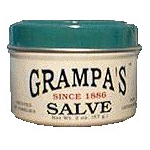Scleroderma, literally ”hard skin,” affects more than 300,000 Americans, four women to every man. Children are also at risk and it is not limited to any racial or ethnic group, although the most serious form of this disease, systemic diffuse scleroderma, seems to target African American women. It is considered a chronic autoimmune disease of the bodys connective tissue caused by overproduction of collagen which normally keeps our skin and organs smooth and supple. When the body produces a surplus, however, these same tissues become hard and immobile.
There are two types of scleroderma: localized, involving only the skin, is not as serious or debilitating and rarely develops into the more serious – systemic, involving both the skin and organs, much more serious, degenerative and may be life-threatening. At present, there is no known cause or cure. It is not contagious, cancerous, or inherited, although new research has found that some people may carry a gene or genes that heighten their risk, particularly when exposed to an environmental trigger such as silica, organic solvents and some drugs. While it is considered an autoimmune disease such as Lupus, it usually does not follow this model and does not respond as well as other autoimmune diseases to immunosuppressant therapies.
Symptoms include sensitivity to cold in hands and feet; swelling of hands and feet; like arthritis, stiffness and aching in joints and sometimes muscles; skin thickening and hardening; digestive system problems; dry mucous membranes; oral, facial and dental problems; and more seriously, kidney, heart and lung involvement.
Diagnosing scleroderma is difficult because, especially in early stages, its symptoms mimic those of other diseases such as Lupus and arthritis. Rheumatologists and dermatologists are almost always involved along with internists, using blood tests and studies of specific organs if they are presenting symptoms. One of the most non-invasive and useful tests recently developed is called the Nailfold Capillary Test, in which the skin under fingernails is examined under a microscope to detect the absence of capillaries in the extremities.
Once an accurate diagnosis is made, treatment for the symptoms can begin. This usually will include avoiding temperature extremes, eating a healthy diet, engaging in an exercise program to improve circulation and flexibility, use of creams or salves to keep the skin moisturized and more supple; and perhaps a drug regimen that targets improving blood flow, reduces inflammation and pain and will help in controlling infection, should this develop. Improved treatment of the kidneys, once a leading cause of death in scleroderma, has dramatically increased patients survival rate.
While there is not yet a cure, because of the work of the Scleroderma Research Foundation in recent years, scientists and doctors are confident that a resolution to this disease will be found.
1. ‘Scleroderma Fact Sheet,’ www.scleroderma.org/facts.html.
2. ‘Understanding Scleroderma: Types, Symptoms, Diagnosis and Care,’ www.srfcure.org.
| SKU: 9020 – 806 Weight: .1875 Size: 2 oz. Price: $6.99 |
| If you decide to try this product you may order here. |


